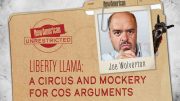
President Barack Obama has set a new record for the amount of land and water seized by a single chief executive: over 553 million acres, or about 865,000 square miles. That’s 30 percent more acreage than the entire state of Alaska and over three times the size of Texas.
Nearly half of that acreage — 260 million acres — was seized in 2016 as Obama undertook what his chief of staff, Denis McDonough, called “audacious executive action” in an attempt to circumvent Congress. Last week, Obama designated over 1.3 million acres in Utah as the Bears Ears National Monument and 300,000 acres in Nevada as the Gold Butte National Monument. In late August, he quadrupled the Papahānaumokuākea Marine National Monument, an area off the coast of Hawaii, creating the world’s largest marine reserve — a move that could cost local fishermen $10 million a year by preventing them from fishing in those waters. In February, the president took 1.8 million acres of California to create three new national monuments. In addition, his Fish and Wildlife Service commandeered portions of Alaska equivalent to the size of New Mexico over the course of six months.
Obama claims the authority to engage in such land grabs, often against the express wishes of state lawmakers, under the Antiquities Act of 1906. That law gives the president the power to designate areas of the country as national monuments, putting them under federal jurisdiction and off-limits to development, mining, drilling, lumbering, or even recreation.
As The New American has previously documented, the Antiquities Act is clearly unconstitutional, and not just because it delegates legislative powers to the executive branch:
The federal government was allowed to have a 10-mile square (100 square miles) for a seat of government. Property for “Forts, Magazines, Arsenals,” etc., for national defense purposes, could be purchased from the states if the state legislatures consented. That’s it. Under Article IV, the federal government is allowed to acquire new territory, which is to be “disposed” of by turning it over to the new state government when the territory is admitted into statehood. Newly created states are to be admitted on an “equal footing” with the original 13 states, meaning with full sovereignty over their lands, not with a distant federal landlord controlling 30 percent, 50 percent, or 90 percent of their land and resources.
In short, the federal government is supposed to own only the acreage “necessary and proper” for the carrying out of its enumerated powers, not vast swaths of land and sea.
Since the Supreme Court has ruled that presidents have virtually limitless discretion in designating national monuments, and since such designations cannot be undone by executive orders but only by acts of Congress, presidents have found the Antiquities Act to be a convenient way to make their mark on the country.
For instance, when President George W. Bush created the Papahānaumokuākea Marine National Monument in 2006, Joshua Reichert of the Pew Charitable Trusts defended Bush’s action on the grounds that using the Antiquities Act was preferable to other approaches, such as designating a national marine sanctuary, because
Monument status is quicker; it’s more comprehensive; and it’s more permanent. Only an act of Congress can undo a monument designation. The sanctuary process, it takes longer; it involves more congressional input, more public debate, more hearings and meetings. And he [Bush] obviously made a decision today to, actually, take a bold step and create something which is going to be immediate, that the law applies immediately to this place now.
Thus, it comes as little surprise that most presidents over the last century have made use of the Antiquities Act. Obama, however, has invoked the act 29 times, about one-fifth of all the times it has been used. He has ignored pleas from state officials as well as congressmen and senators, such as those from Utah who opposed the creation of the Bears Ears National Monument. He has used his power to reward supporters, such as the environmentalists and the Native American tribes who pushed for the Bears Ears designation. He has also used it to advance his own agenda of combating alleged climate change and perhaps, as some observers have suggested, even to thwart the agenda of his successor, who has called for expanding domestic energy production — a difficult thing to do when a significant percentage of U.S. land and water has been declared off-limits to exploration.
On the other hand, President-elect Donald Trump has signaled that despite some Republicans’ stated desires to repeal or at least rein in abuses of the Antiquities Act, he is not necessarily in favor of doing so. In response to a plank in the Republican Party platform calling for turning over federal lands to the states, Trump’s son, Donald Trump, Jr., said, “This is where we’ve probably broken away from a lot of the traditional conservative dogma on the issue, in that we do want federal lands to remain federal.”
On January 20, Trump, Sr., will take an oath to “preserve, protect, and defend the Constitution of the United States.” If he remains true to this vow, he will have no choice but to sign an Antiquities Act repeal bill should Congress pass one. Then again, Obama took the same oath — twice — and proceeded to abuse that unconstitutional law more than any of his predecessors. Whether Trump will take the oath more seriously than Obama did remains to be seen.




